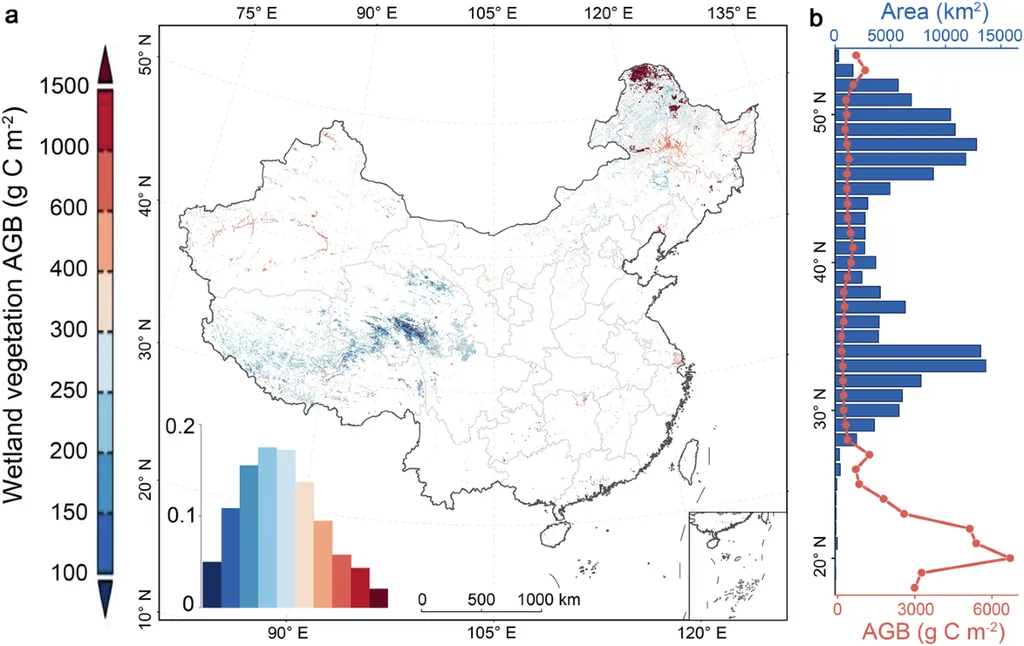In the heart of China, where the vast Dongting Lake wetlands stretch out, a groundbreaking advancement in remote sensing technology is poised to revolutionize how we understand and manage these critical ecosystems. Li Chen, a researcher at the Hunan Agricultural Forestal and Industrial Prospective Design Institute Co., Ltd., in Changsha, has led a team that developed WetSegNet, a cutting-edge network designed to classify wetlands with unprecedented accuracy. This innovation could have significant implications for the energy sector, particularly in the realm of sustainable development and ecological monitoring.
Wetlands are nature’s powerhouses, playing a pivotal role in climate regulation, pollutant filtration, and biodiversity conservation. However, their intricate spatial details have long posed challenges to conventional interpretation techniques. Enter WetSegNet, an edge-guided multi-scale feature interaction network that integrates a convolutional neural network (CNN) and Swin Transformer within a U-Net architecture. This synergy allows for a precise boundary extraction and multi-scale contextual modeling, addressing the complexities of high-resolution remote sensing imagery.
The framework introduces two novel components: the Multi-Scale Feature Interaction (MFI) module and the Multi-Feature Fusion (MFF) module. The MFI module employs cross-attention mechanisms to mitigate semantic discrepancies between encoder–decoder features, while the MFF module enhances boundary delineation through edge-guided spatial attention (EGA). “This approach allows us to reconcile local and global feature representation, which is crucial for accurate wetland classification,” explains Li Chen.
The results are impressive. Experimental validation on GF-2 satellite imagery of Dongting Lake wetlands shows that WetSegNet achieves an overall accuracy of 90.81% and a Kappa coefficient of 0.88. Notably, it achieves classification accuracies exceeding 90% for water, sedge, and reed habitats, surpassing the baseline U-Net by 3.3% in overall accuracy and 0.05 in Kappa. “The proposed model effectively addresses heterogeneous wetland classification challenges, validating its capability to reconcile local–global feature representation,” Chen adds.
The implications for the energy sector are profound. Accurate wetland classification is pivotal for scientific management, ecological monitoring, and sustainable development. As the world shifts towards renewable energy sources, understanding and preserving these ecosystems becomes even more critical. Wetlands can act as natural carbon sinks, mitigating the impacts of climate change, and their preservation is essential for maintaining biodiversity.
This research, published in the journal *Remote Sensing* (translated to English as “Remote Sensing”), represents a significant step forward in the field. The integration of advanced technologies like the Swin Transformer and CNN within a U-Net architecture opens new avenues for remote sensing applications. As Li Chen and his team continue to refine their model, the potential for broader applications in environmental monitoring and management becomes increasingly apparent.
In the words of Li Chen, “This is just the beginning. The capabilities of WetSegNet could be extended to other ecosystems and environmental monitoring tasks, paving the way for more sustainable and informed decision-making in the energy sector and beyond.” As we stand on the brink of a new era in environmental technology, the future looks promising, thanks to the innovative work of researchers like Li Chen and his team.

